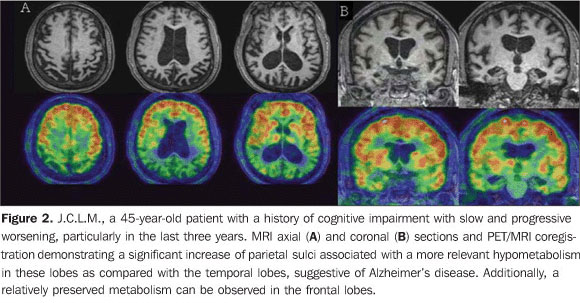The combination of positron emission tomography (PET) with magnetic resonance imaging (MRI) has been the subject of several studies in recent years. Positron emission tomography is the most sensitive and specific imaging modality in the detection of metabolic changes, but presents limited spatial resolution. On the other hand, MRI presents a significant spatial resolution, besides evaluating soft tissues signal intensity with excellent contrast resolution. The present iconographic essay is aimed at demonstrating the potential clinical application of PET/MRI coregistration. The studies were performed in a dedicated PET unit with 18F-fluorodeoxyglucose (FDG) as radiopharmaceutical and coregistered with 1.5 T or 3 T brain MRI. The brain images fusion software presents an already well-established accuracy, so a significant synergy between a functional PET study and an excellent MRI anatomical detail is achieved. The most attractive clinical applications of this approach are the following: epileptogenic zone assessment in patients refractory to drug therapy, identification of patients with cognitive impairment at higher risk for progression to dementia and differentiation of dementias and Parkinsonian syndromes.
Fluorodeoxyglucose; FDG; Positron emission tomography; PET; Magnetic resonance imaging; Fusion; Clinical neurology








